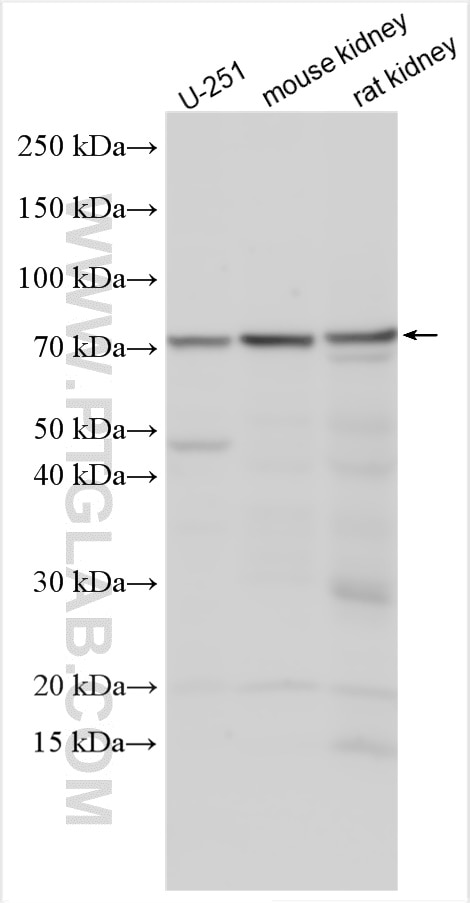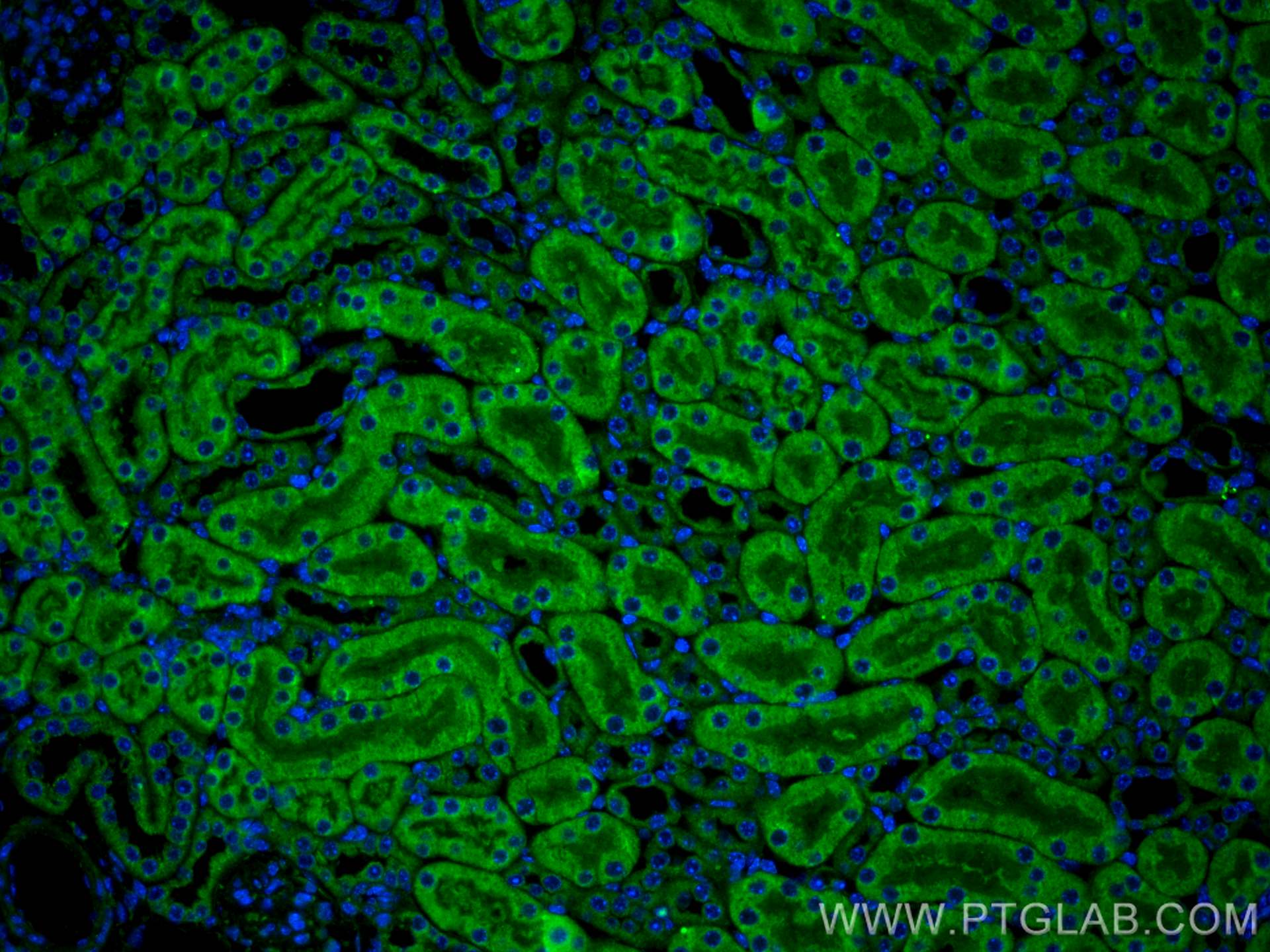Tested Applications
| Positive WB detected in | U-251 cells, mouse kidney tissue, rat kidney tissue |
| Positive IF-P detected in | mouse kidney tissue |
Recommended dilution
| Application | Dilution |
|---|---|
| Western Blot (WB) | WB : 1:1000-1:4000 |
| Immunofluorescence (IF)-P | IF-P : 1:50-1:500 |
| It is recommended that this reagent should be titrated in each testing system to obtain optimal results. | |
| Sample-dependent, Check data in validation data gallery. | |
Product Information
18879-1-AP targets CER1 in WB, IF-P, ELISA applications and shows reactivity with human, mouse, rat samples.
| Tested Reactivity | human, mouse, rat |
| Host / Isotype | Rabbit / IgG |
| Class | Polyclonal |
| Type | Antibody |
| Immunogen | CER1 fusion protein Ag12926 Predict reactive species |
| Full Name | cerberus 1, cysteine knot superfamily, homolog (Xenopus laevis) |
| Calculated Molecular Weight | 267 aa, 30 kDa |
| Observed Molecular Weight | 70 kDa |
| GenBank Accession Number | BC069405 |
| Gene Symbol | CER1 |
| Gene ID (NCBI) | 9350 |
| RRID | AB_3085568 |
| Conjugate | Unconjugated |
| Form | Liquid |
| Purification Method | Antigen affinity purification |
| UNIPROT ID | O95813 |
| Storage Buffer | PBS with 0.02% sodium azide and 50% glycerol pH 7.3. |
| Storage Conditions | Store at -20°C. Stable for one year after shipment. Aliquoting is unnecessary for -20oC storage. 20ul sizes contain 0.1% BSA. |
Background Information
CER1 is a cytokine member of the cysteine knot superfamily, characterized by nine conserved cysteines and a cysteine knot region. The cerberus-related cytokines, together with Dan and DRM/Gremlin, represent a group of bone morphogenetic protein (BMP) antagonists that can bind directly to BMPs and inhibit their activity. CER1 can exist as homo- or heterodimers (PMID: 23717584, 9501024).
Protocols
| Product Specific Protocols | |
|---|---|
| WB protocol for CER1 antibody 18879-1-AP | Download protocol |
| IF protocol for CER1 antibody 18879-1-AP | Download protocol |
| Standard Protocols | |
|---|---|
| Click here to view our Standard Protocols |





